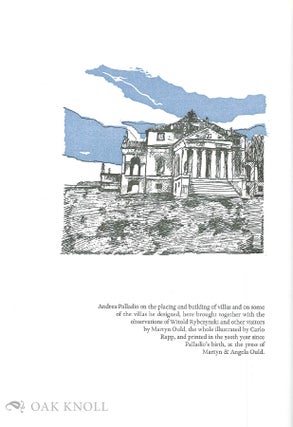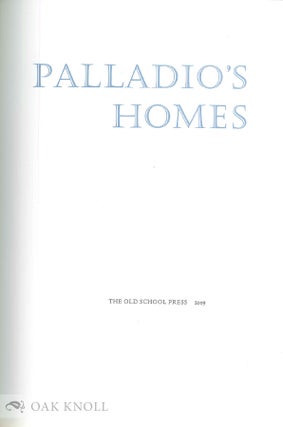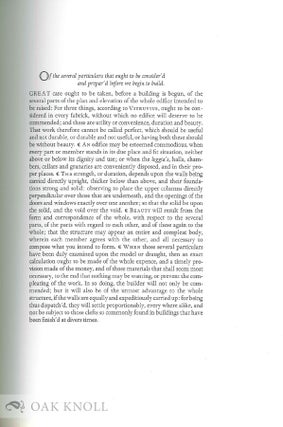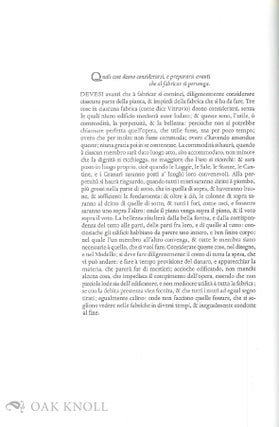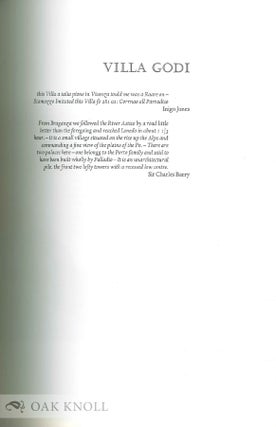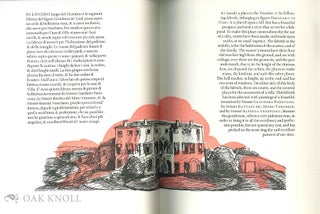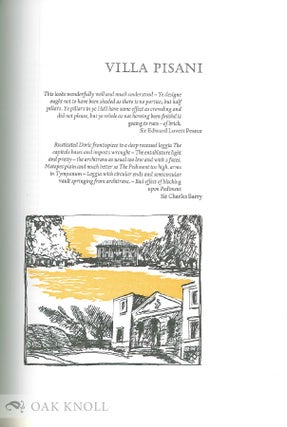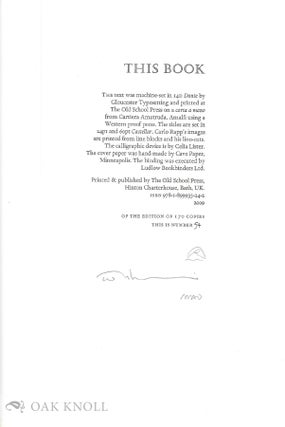PALLADIO'S HOMES.
- Bath: Old School Press, 2009.
- 4to.
- cloth & paper covered boards, cloth chemise with paper spine label
- unpaginated
- ISBN: 9781899933242
Price: $400.00 other currencies
Order Nr. 102514
One of 170 copies. Fine copy is cloth chemise.
From the printer: "We have had a keenness for the domestic architecture of Andrea Palladio for some time - if one can refer to the villas he built for, say, the Venetian nobility as just 'domestic'. Anyway, we can say that he designed houses for people to live in as well as civic buildings.
Palladio designed about thirty domestic villas of which about nineteen survive (the exact numbers depending on how you count them). His influence on subsequent architecture in the UK and USA was considerable and remains to this day, and 'Palladianism' entered the vocabulary of architects world-wide. He left not only a legacy of fine buildings, but also a detailed exposition of his ideas in his I Quattro Libri dell'Architettura ('The Four Books of Architecture'), first published in 1570. Palladio prefaced his descriptions of his villa designs in I Quattro Libri with chapters laying out his general principles for the placing and design of villas. This new title, Palladio's Homes, reprints those chapters in the original Italian together with a parallel translation by the English architect Isaac Ware who in 1738 provided, unlike previous translators, a faithful translation as well as accurate reproductions of Palladio's numerous original plates.
I Quattro Libri was considered so important by later architects that they would travel to Italy to see Palladio's work for themselves, scribbling their own views in the margins of their copies. This new title includes these and other reflections - not always complimentary - alongside Palladio's descriptions of his work. Amongst those quoted are architects Inigo Jones and Sir Edward Lovett Pearce, Goethe, sixteenth-century power-walker Thomas Coryat (of Coryat's Crudities fame), and a more recent visitor, Witold Rybczynski, Professor of Urbanism at the University of Pennsylvania, who recorded his own visits in the 1990s in The Perfect House. Professor Rybczynski has written a new essay on Palladio and his legacy for Palladio's Homes.
The texts present a wonderful opportunity to celebrate Italian printing as well as one of its greatest architects. We have printed the text on an Amatruda paper hand-made in Amalfi using Giovanni Mardersteig's Dante typeface in the 14D size. Italian artist Signor Carlo Rapp has prepared illustrations for seven of the thirteen villas covered, using linocuts and pen and ink drawings. The book is 36.5cm tall by 26.5cm wide (14 3/8 in. by 10 3/8 in.), has 112 pages, and is quarter-bound in dark grey cloth. The boards are covered with a splendid three-pulp paper by Cave Paper of Minneapolis called 'Cloudy Sky', and the book is presented in a robust wrap of board covered in the same cloth as the spine by Ludlow Bookbinders Ltd. Both book and wrap carry a spine label."


